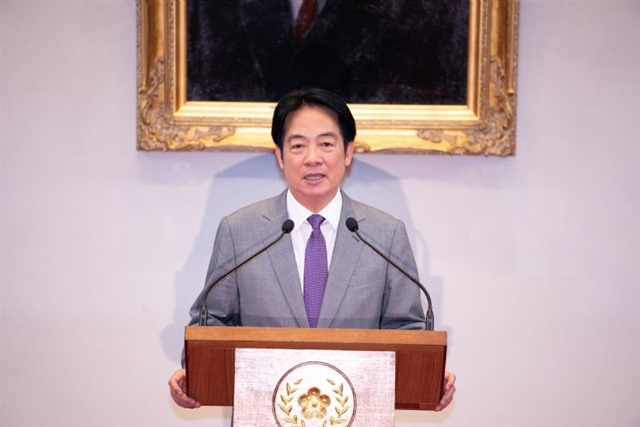After four rounds of in-person negotiations and multiple video conferences, Taiwan's provisional tariff rate has been set at 20%.
Taiwan pushes for lower rates
President Ching-te Lai stated that the 20% tariff was never Taiwan's negotiation goal from the outset. In future talks, the government will seek a more favorable and reasonable rate. PwC US Business Partner Peter Su explained that whether the tariff can fall below 20% will depend on whether Taiwan offers additional concessions, purchases, or investment commitments to the US.
At the August 1, 2025, press conference, President Lai stated that the government has held around 20 industrial forums to mitigate the impact of reciprocal tariffs on SMEs. A special support budget will be raised from NT$88 billion (US$2.9 billion) to NT$93 billion. Lai emphasized that the outcome of Taiwan-US trade negotiations will require legislative approval and must be accountable to society.
Premier Jung-tai Cho added that the Executive Yuan will communicate with the Legislative Yuan regarding the latest developments. A previously approved special bill will be comprehensively adjusted. In the meantime, Lai stated that negotiations are ongoing, and details remain confidential regarding whether Taiwan has made procurement or investment commitments to the US.
Strategic negotiation principles
Taiwan's negotiation team is working hard on the front lines, upholding four principles: national interest, industrial interest, food security, and public health.
Semiconductors, computers, and ICT products are among Taiwan's most important exports to the US. Further negotiations are expected once the US Section 232 investigation results are released. Taiwan insists that US tariffs do not impact Taiwan's ICT and electronic component sectors and seeks to jointly promote bilateral cooperation in national security, technology, and diverse fields to create long-term mutual benefits.
According to Lai, the government has two key goals: (1) deepen Taiwan-US economic and trade cooperation; and (2) build strong partnerships in national security, technology, and various other areas.
Implementation timeline and industry impact
KPMG tax expert Yang Chang stated that under an executive order, the new 20% reciprocal tariff will take effect on August 7, 2025 (US Eastern Standard Time). A 7-day grace period prior to enforcement still allows countries to conduct trade and security agreement talks with the US. Offering concrete commitments within this window could still influence the final tariff arrangement.
Su added that a lower tariff than 20% depends on Taiwan's willingness to make further trade and investment pledges. Among Asian countries, only Japan and South Korea secured 15% tariff rates; most others are around 20%. Taiwanese companies must factor this into manufacturing site decisions.
Beyond tariff considerations
Controversy surrounding whether Taiwanese firms should manufacture in the US remains. According to Su, attention should instead focus on the US Congress-proposed tax treaty, which carries even more significant long-term implications.
He emphasized that Taiwanese companies should not base factory site selection solely on low tariffs. Tariffs affect market share and margins depending on supply-demand dynamics and bargaining power. Overlooking factors such as infrastructure, talent availability, production yield, licensing, and startup time in new regions could negate the savings from tariff reductions.
Article edited by Jerry Chen




